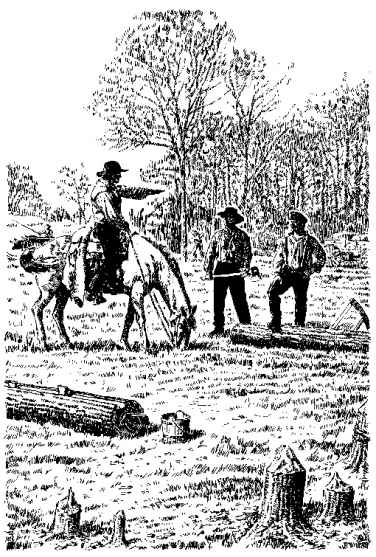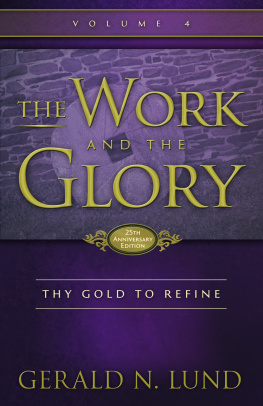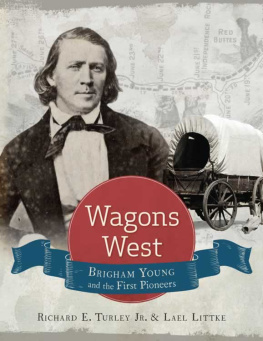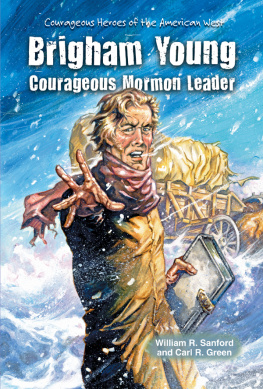The Work and the Glory, Volume 8
So Great a Cause
Gerald Lund
1997 Gerald N Lund and Kenneth Ingalls Moe.
All rights reserved. No part of this book may be reproduced in any form or by any means without permission in writing from the publisher, Deseret Book Company (permissions@deseretbook.com), P.O. Box 30178, Salt Lake City Utah 84130. This work is not an official publication of The Church of Jesus Christ of Latter-day Saints. The views expressed herein are the responsibility of the author and do not necessarily represent the position of the Church or of Deseret Book. Deseret Book is a registered trademark of Deseret Book Company.
All characters in this book are fictitious, and any resemblance to actual persons, living or dead, is purely coincidental.

Text illustrations by Robert T. Barrett
1997 Gerald N. Lund and Kenneth Ingalls Moe
All rights reserved. No part of this book may be reproduced in any form or by any means without permission in writing from the publisher, Deseret Book Company, P. O. Box 30178, Salt Lake City, Utah 84130. This work is not an official publication of The Church of Jesus Christ of Latter-day Saints. The views expressed herein are the responsibility of the author and do not necessarily represent the position of the Church or of Deseret Book Company.
Bookcraft is a registered trademark of Deseret Book Company.
First printing in hardbound 1997 First printing in paperbound 2001 First printing in trade paperbound 2006
Visit us at DeseretBook.com
Library of Congress Catalog Card Number: 97-76972
ISBN-10 1-57008-358-4 (hardbound) ISBN-10 1-57345-877-5 (paperbound) ISBN-10 1-59038- 726-0 (trade paperbound) ISBN-13 978-1-59038-726-9 (trade paperbound)
Printed in the United States of America
Publishers Printing, Salt Lake City, UT
10 9 8 7 6 5 4 3 2 1
For behold, this is my work and my gloryto bring to pass the immortality and eternal life of man.
Moses 1:39
To KimKenneth I. Moe
without whose vision, determination,
and dedication this series would not be.
His friendship and influence shall be sorely missed.
Preface
In No Unhallowed Hand, volume 7 of the series The Work and the Glory, we saw the Steed family wrenched once again from their homes as hatred and persecution exploded into open conflagration. The Prophet Joseph Smith and his brothers Hyrum and Samuel were dead, victims of the blind rage that swept across Hancock County, Illinois, in 1844. Brigham Young and the Quorum of the Twelve Apostles took the reins of leadership and quickly proved that, as Joseph had prophesied a few years before, no unhallowed hand could stop the work of God from progressing. Work on the Nauvoo Temple, a remarkable and beautiful structure, continued with even greater urgency. Missionary work was expanded and the task of proclaiming the gospel to the world hastened even further. But as thousands continued to join the Church and come to Nauvoothat beautiful city set on a sweeping bend of the Mississippithe enemies of the Church were stirred to action once more. Lies and misunderstandings led to accusations and threats. These quickly gave way to violenceburnings, whippings, mobbings, and eventually murder. The leaders of the Church had no choice. They would leave their beloved Nauvoo to their enemies and turn their faces west. They would find that place which God had prepared for them, far away in the West, where none would come to hurt or make afraid. Thus it was that at the end of volume 7, after the tragic loss of Benjamin, the Steeds left Nauvoo, crossed the river for the last time on a bridge of ice, and joined the camp at Sugar Creek in Iowa Territory.
Volume 8, So Great a Cause, picks up the story at that point. It is 28 February 1846. Conditions in the camp, just seven or eight miles from Nauvoo, are wretched. It is bitterly cold. Supplies are insufficient. Many Saints have nothing more than a bedroll to shelter them from the cold. But the Steeds have most of their family there, in obedience to the call of their leader. Carl and Melissa Rogers, however, are not with the rest of the family. Still bitter over the practice of plural marriage, even the powerful bonds of love within the family are not enough to change their minds about leaving. Joshua has determined to go west so that he can care for his widowed mother and help the family find their new home, but Caroline and the children are not with him. This is Joshuas choice and not their own.
On March first, Brigham Young decides that they can wait no longer. The others will have to come as they can. He gives the signal and the first wagons begin rolling westward. What should have been the easiest part of their journey to the Rocky Mountains quickly becomes a never-ending nightmare as winter gives way to one of the wettest springs in memory. Roads become mile-long bogs that consume men and animals and leave them broken and exhausted. Sickness sweeps the camps. Women give birth in the most difficult of circumstances. Soon wagons are strung across a hundred miles of prairie. And Death, as it has so many times before, rides along, always seeking company.
Now it becomes evident why Brigham Young and Heber C. Kimball and others were sent on Zions Camp twelve years before. It was an experience that will now prove to be invaluable. The knowledge that Brigham and Heber gained during the exodus from Far West, while Joseph languished in the horror of Liberty Jail, is also put to the full test. Faced with the almost impossible task of taking fifteen thousand or more exiles into the wilderness and keeping them fed and sheltered, Brigham quickly shows that the prophetic mantle of Joseph Smith has been passed on to him. He will come to be known as the American Moses, as names like Sugar Creek, Richardsons Point, Garden Grove, Mount Pisgah, and Winter Quarters become part of the Latter-day Saint heritage.
Once again, through the eyes of the Steeds, now more than two dozen in number, we see the historical tapestry unfold. With them we experience the terrible trek across Iowa, slogging onward at an average rate of barely two miles per day. They are moving west toward their destiny; but for a time, at least, it looks as though that destiny approaches at a rate that is frustratingly slow. But on they move, convinced that they are engaged in so great a cause.
It hardly seems possible that it has now been nine full years since this project began. It was the summer of 1988 when I received a letter from a person in North Carolina whom I had never before met. Kenneth I. MoeKim to his friends and familycaught me completely off guard when he said he wanted to discuss with me the idea of putting the story of The Church of Jesus Christ of Latter-day Saints into the form of a historical novel. He indicated that he had read all of my previous novels and felt that I was the one to author such a project.
It is with considerable chagrin that I have to admit that I did not greet the proposal very warmly. I was flattered, of course, and told him that I had always dreamed about someday doing that very thing. But not now. I was currently in the process of creating another novel that I found intriguing and was having an enjoyable time writinga story set at the time of the fall of Jerusalem in a.d. 70. I also indicated to Kim that because the project he had in mind was such a huge undertaking, requiring massive amounts of research, travel, purchase of books, etc., etc., I didnt feel that I could pull away from my other writing projects to do this. I had several children in college and needed to keep generating some extra income to handle that drain on my finances.

















